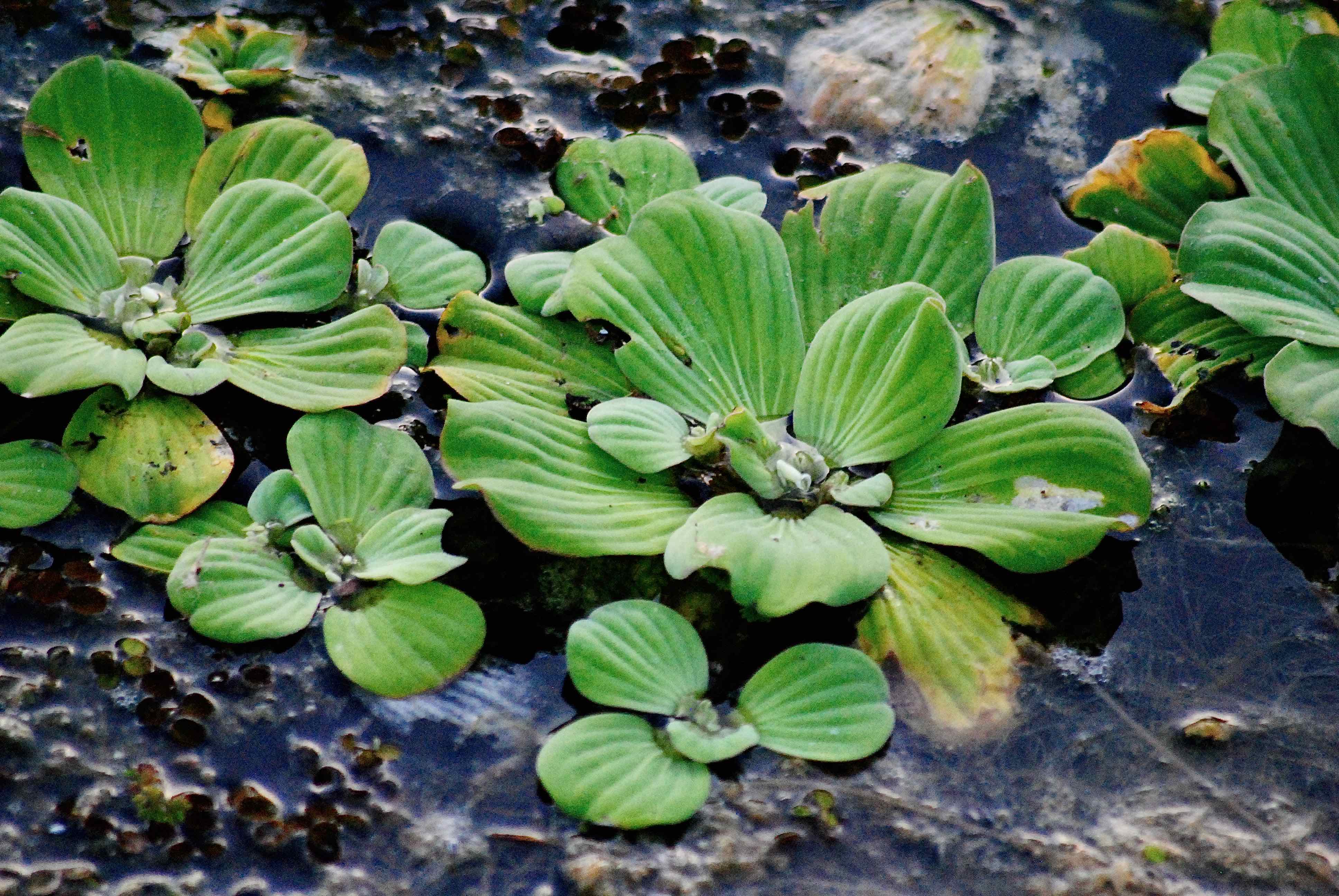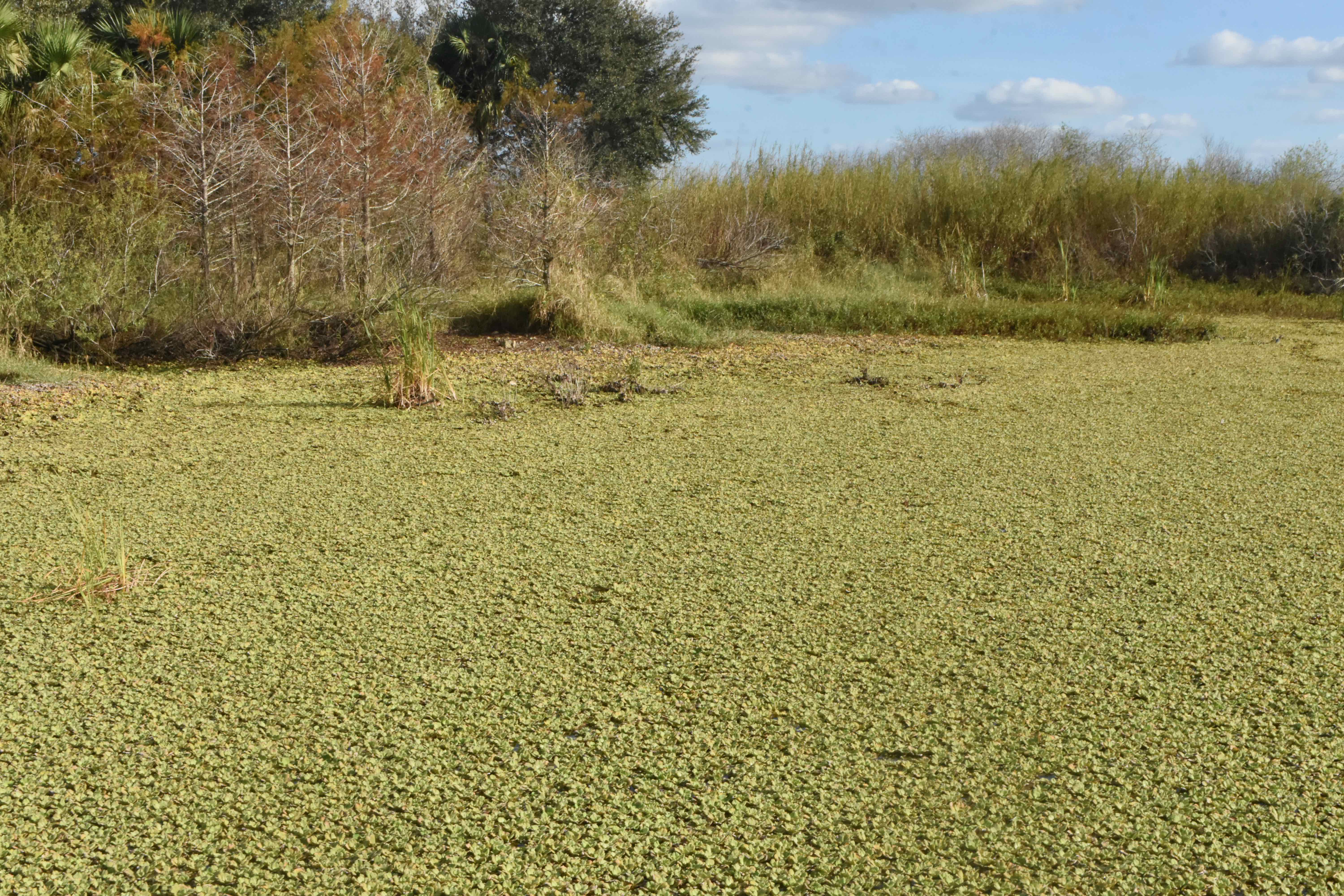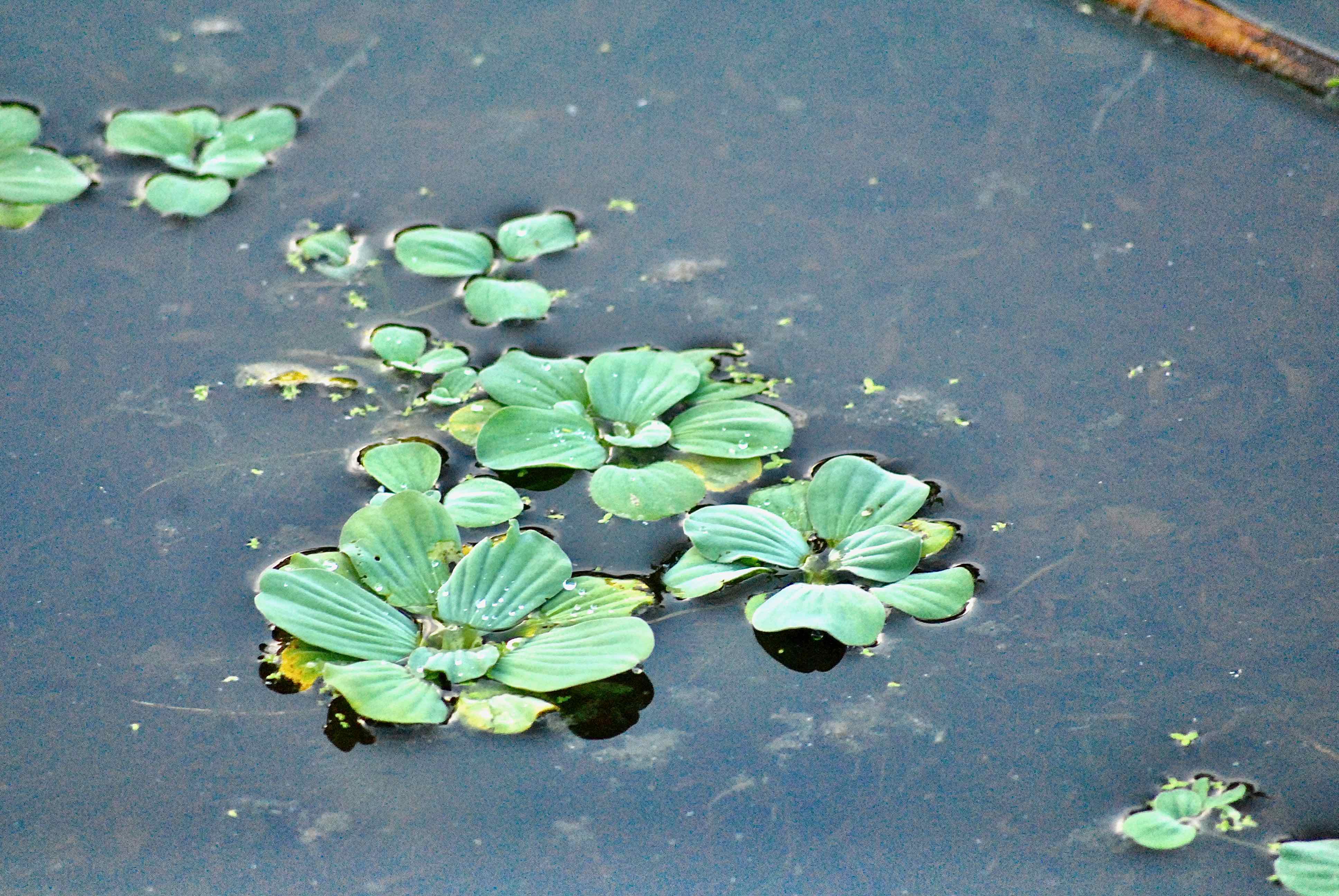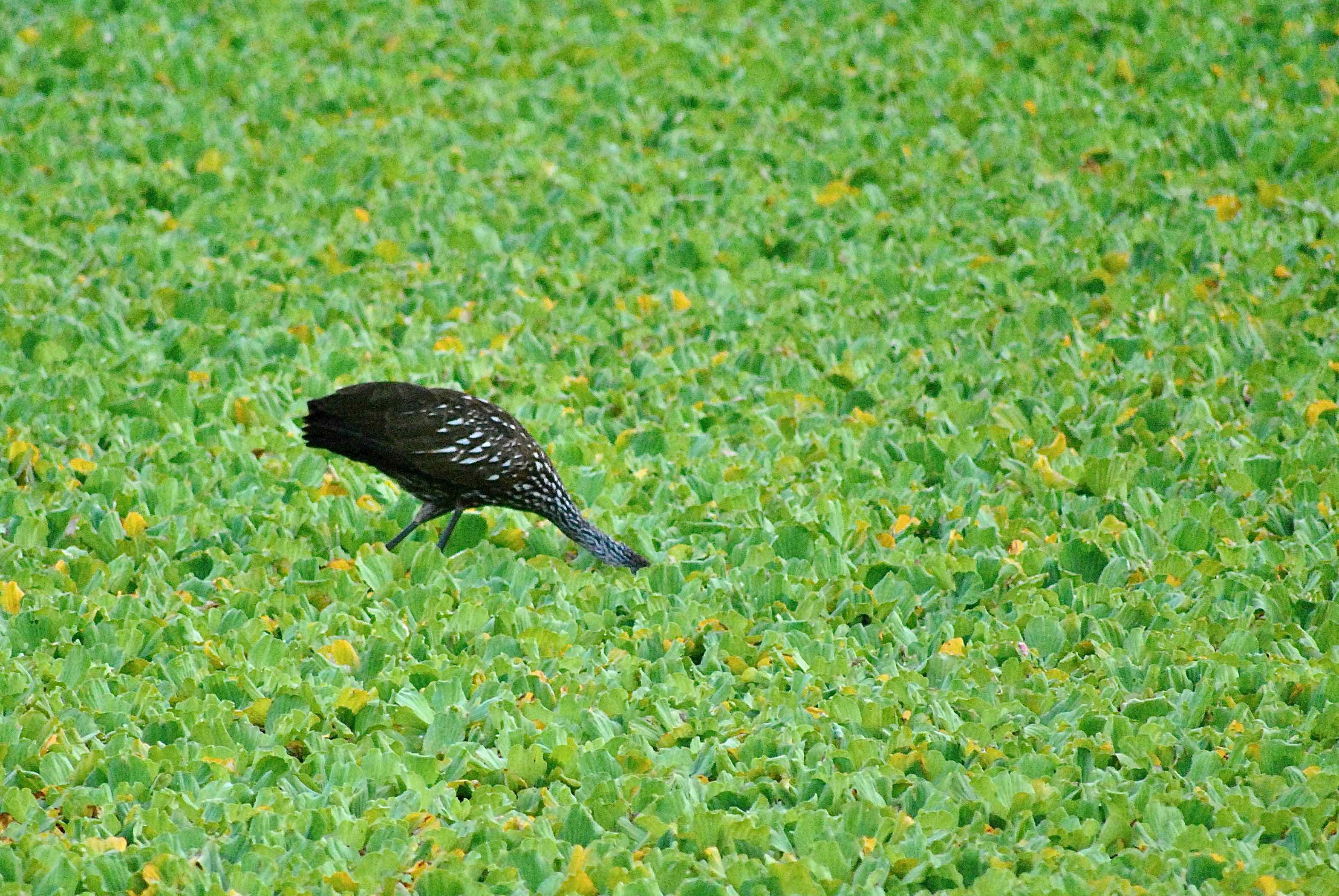
Water lettuce, photographed at Green Cay Nature Center, Boynton Beach, Palm Beach County, in October 2013.
Native plant, or noxious weed? That is the question that water lettuce, Pistia stratiotes, presents. The arbiter of such things, the Florida Exotic Plant Pest Council, lists water lettuce as a Category I invasive, meaning it's here and doing damage to Florida's ecosystems. State officials list water lettuce as a prohibited aquatic plant.
On the other hand, there is new evidence that water lettuce, also spelled water-lettuce, is a Florida native. The United States Department of Agriculture considers it a native, as does the Institute for Regional Conservation in Delray Beach. In any case, it's been in Florida a long time — at least since 1765 when a certain William Bartram noted its presence while exploring the St. John's River. As long believed, water lettuce originated in Africa, and came to Florida via explorer ships that emptied water ballast in local waters.
The problem with water lettuce isn't the few individual plants seen in the photograph at the top but its ability to form dense mats that are thick enough in rivers and canals to halt boat traffic, and to cover lakes and ponds. The photo at the bottom left was taken at Dupuis Wildlife Management area in December 2018. It's a pond covered in water lettuce so dense that it looks like a field. We had visited the same pond three years earlier and it was mostly open. That's what water lettuce can do.
The plant looks like an open head of lettuce, which is how it gets its name. The leaves are a light green and ridged; it has no stems. Water lettuce floats, with feathery roots trailing below. Its flowers, which appear throughout the yeer but particularly in late summer through early winter, are the very definition of inconspicuous — they weren't even observed on Florida plants until the 1980s. The fruit is a green berry.
Water lettuce inhabits ponds, lakes, ditches and slow-moving streams and canals.
In the United States, it has a wide but scattered range — as far north as New York and New Jersey and as far west as Arizona, California and even Hawaii. Some believe that it is an occasional plant in parts of its range, coming and going and coming again. Water lettuce is found throughout most of Florida's Peninsula and parts of the Panhandle. Alabama, California, Connecticut, South Carolina and Texas either ban the plant or list it as a noxious weed.
Water lettuce is found throughout the warmer parts of the globe, the Caribbean, Mexico, Central America, South America, Africa, Asia, Australia and the Pacific Islands. It is considered a pest in Australia.
In the Indian subcontinent, water lettuce is also known as water cabbage. The leaves are used to sooth mouth irritations, while the roots are used to make a laxative. In China, water lettuce is used to treat swellings and urinary tract infections. The plant is also used as animal feed.
Water lettuce is a member of Araceae, the Arum family. Its scientific name means water soldier.
Click on photo for larger image
Links for Water Lettuce



